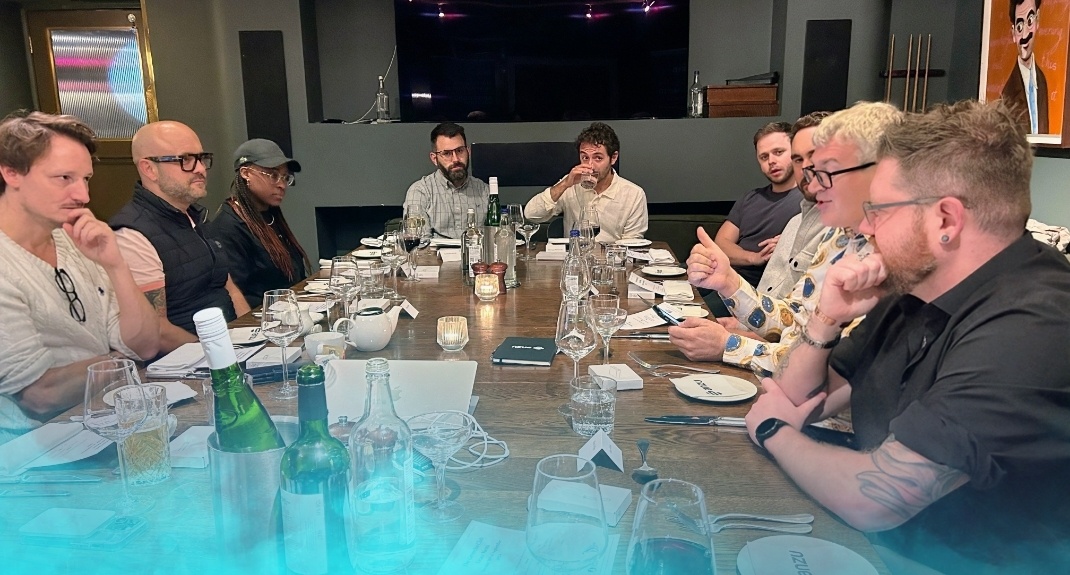- Newsroom
- >
- The Rise of Gaming in Advertising: Insights from Industry Leaders on Growth, Challenges, and Opportunities

The Rise of Gaming in Advertising: Insights from Industry Leaders on Growth, Challenges, and Opportunities
Gaming has become a staple part of advertising budgets for most leading UK brands. Many of the big agencies have also built out dedicated gaming arms and teams to address this medium as consumer time spent on gaming increases. Leading AdTech vendors have also branched out into gaming, offering everything advertisers are used to from other digital advertising channels, from fraud prevention, viewability, and enhanced targeting to attention, attribution, and brand lift studies.
To explore the future of this dynamic landscape, including the factors driving and hindering growth, Anzu— the world’s most advanced intrinsic in-game advertising solution—partnered with gametech company iion to host an exclusive roundtable at London’s iconic Groucho Club. This evening brought together advertising and gaming specialists from across the industry, including leaders from Anzu, iion, Digitas, EssenceMediacom, Lumen, Wavemaker, Total Media, and WeGame2, chaired by Pocket Gamer CEO Chris James.
Generational Shifts: How Gaming is Becoming the New Social Hub
A key theme of the discussion was how big gaming has become and how as each new generation emerges, they spend more and more time playing games. “Each successive generation is more engaged in gaming; my son just can’t imagine life without not only games but constant online gaming environments he spends his time in,” said Chris James from Pocket Gamer. Newzoo’s Global Gamer Study recently found that gaming is the most popular pastime for Gen Alpha, while for Millennials and Gen Z, gaming and social media are tied as the most popular entertainment mediums.
For many younger audiences, gaming has become not just somewhere they go to play but where they go to hang out with friends, make new ones, learn, consume media, and compete. Gaming IPs are now firmly embedded within films, TV shows, and literature, and many of the globe’s leading streamers and influencers are creating content in and around popular gaming titles, flooding social media sites. Gaming has become such a cultural cornerstone for younger generations that it now defines their social currency and identity, much like music did for Boomers and Gen X during their formative years.
Beyond Play: Defining and Categorizing Gaming
This discussion led to an important question: How should we define and categorize gaming? Iion’s Chief Commercial Officer, Yun Yip, asked the group, “what really is gaming? Right now, we’re pigeonholing gaming as one particular type of media, but really it’s loads. Gaming is social, it is entertainment, and it can also even be considered a sport.”
Limiting it to one isolated medium or just another line item on a plan means that advertisers are missing out on the huge opportunities that gaming presents to engage and make meaningful connections with players in ways that have never before been possible due to the limitations of traditional 2D advertising channels. The group outlined how there are so many ways to activate within gaming and that the space has become so big it can become overwhelming, especially for those who are unfamiliar with the space and have not grown up entrenched in gaming’s culture and society.
Audience Relevance vs. Scale
Ashleigh Heitman, Associate Director at EssenceMediacom, outlined that rather than thinking about gaming’s size, it’s easier to approach it from an audience-first perspective. “It’s not about the size of the gaming audience, it’s about the relevance of them. Audiences that game are so relevant to many of my products, and the alignment is spot on. It’s all about matching the right brand with the right game and audience and finding a solution that allows you to do that with ease.”
Anzu’s VP of Sales, Michael Smith, agreed, saying that “gaming is so big it’s no longer a case of building reach and scale as Anzu now has access to hundreds of millions of gamers across the UK and globally. For advertisers, it’s about understanding where your audience is and then how you connect with them in a way that enhances their experience and adds value to your brand”.
The group noted that while the gaming industry traditionally focuses on games, advertisers think in terms of audiences. However, with the growing maturity of intrinsic in-game ads, advanced audience targeting is now bridging this gap, enabling brands recto precisely reach player segments that align with their campaigns across various games and platforms.
Attention Metrics: Outperforming Traditional Channels
Data from Anzu and Lumen shows that in-game ads capture more attention than Facebook and Instagram’s in-feed ads, with 6 in 10 players likely to make a purchase after seeing an in-game ad. As a result, advertisers are increasingly viewing gaming audiences as premium, with in-game advertising offering a powerful way to reach these highly engaged players. However, the non-clickable nature of intrinsic ads poses challenges for brands fixated on click-through rates, hindering wider budget allocation.
Bukky Moemeke, Global Platforms Director, Culture & Entertainment at Wavemaker, noted, “Brands need to focus on the relevancy of audiences, not only the reach or the click-through rate, which in isolation may not tell the whole story in this day and age. When you have engaged and relevant gaming audiences, the measures of success look different, and we need to start considering different metrics. To turn the dial, we need to better understand how to translate these emerging metrics into a language that is more readily accepted by the industry”
The group acknowledged this as a significant barrier for brands entering the gaming space yet emphasized that brand lift studies and a focus on attention metrics demonstrate gaming’s ability to influence audiences across the marketing funnel. Anzu’s Director of Product Marketing, Simon Whittick, outlined that with regard to intrinsic in-game advertising, “we’ve solved level one of measurement, which was viewability, attention, IVT, and brand lift. Now, it’s about the next step, which is how we are impacting sales. And the early signs we are seeing is that the impact intrinsic in-game ads have on purchases in some sectors is very positive because of the high engagement and attention levels”.
Lumen’s CEO Mike Follett followed up, stating that given the results they’ve seen that show the huge amount of attention that gaming drives, he’s “not surprised at all that it’s driving lower-funnel metrics and impacting sales.” A recent global study from Anzu and Happydemics revealed that intrinsic in-game advertising is 5 percentage points higher than the online media average at driving purchase consideration, outperforming video by 5 percentage points, display by 3 percentage points, and CTV by 2 percentage points.
To learn more about the different entry points into gaming, what solutions are available, and whether they are right for your brand check out Anzu’s solution here and iion’s offering here.

Nick is Anzu's Content Lead. As a gamer with a background in AdTech, he has a unique perspective on the industry and the in-game advertising sector.